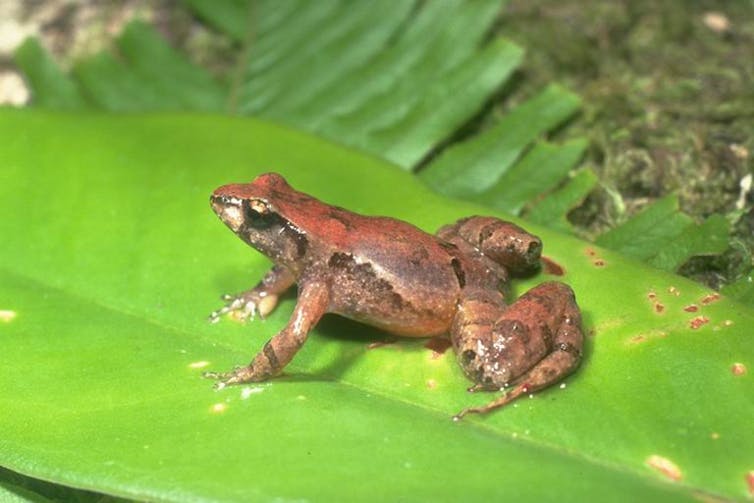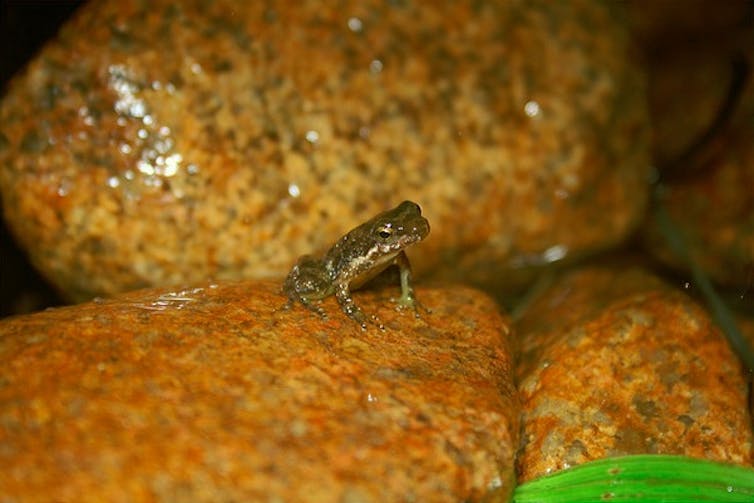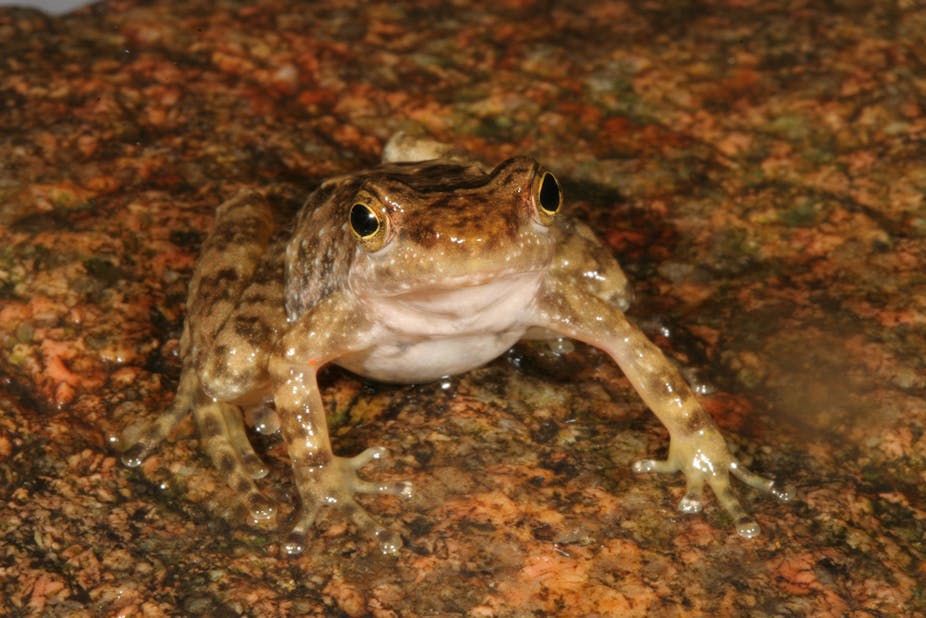South-west of the port of Gladstone in Queensland lies Kroombit Tops National Park, housing many plants and animals, some of them unique. The reserve includes steep escarpments with wet, rainforest gullies.
Walk through these gullies during the spring-summer wet season and you might hear a unique “tink, tink, tink” sound. It sounds like a bird or someone hitting two tiny pieces of metal together, but actually it’s the Kroombit Tinker Frog. This tiny frog - growing to no more than 25mm - is found nowhere else.
The tinker frogs (part of the genus Taudactylus) are one of the most primitive groups of frogs within Australia. There are six species within this genus (T. acutirostris, T. eungellensis, T. pleione and T. rheophilus, T. diurnus and T. liemi), and all are found in Queensland, Australia (different species occur in different national parks).
All species live in wet, rainforest gullies or streams and are extremely cryptic, often hiding under rocks, boulders or leaf litter. It is believed that all species within this genus lay eggs, hatch as tadpoles and metamorphose into adult frogs.
Status
Currently, four of the tinker frogs (T. acutirostris, T. eungellensis, T. pleione and T. rheophilus) are listed as critically endangered by the IUCN, while T. diurnus is listed as extinct and T. liemi is listed as near threatened. It is believed that populations of most tinker frog species are in decline.

Threats
Several factors have contributed to the decline or complete extinction of these species. These are the usual suspects, including introduced pests species (such as pigs and horses) and, in the past, habitat destruction through logging. Clearing vegetation on leased land may still be an issue, and wildfire may also be contributing to declining numbers.
One main threat that cannot be seen with the human eye is amphibian chytrid fungus. This fungus is believed to be responsible for or have contributed to numerous amphibian extinctions around the globe. The fungus has been found in some streams where certain tinker frog species are found. The extremely restricted distribution of these species populations means that they are particularly susceptible to all of these threats.
Strategy
Continued surveying (both visual and acoustic) to monitor the population of critically endangered T. pleione is essential to pick up any further declines of the species. Fire and pest management controls have also been implemented in Kroombit Tops National Park.
Similar management strategies are in place for the other tinker frog species outside of Kroombit Tops National Park. Monitoring programs to determine the population health of certain tinker frog species, feral animal control, disease investigations and public education and participation are all strategies either currently in place or used in the past.
Recently, a captive husbandry project has been established at Currumbin Wildlife Sanctuary in conjunction with Griffith University. This project is aiming to establish a “safe haven” for any unforeseen scenarios that could lead to the extinction of the remaining tinker frogs. The program has successfully raised, for first time ever, the near threatened T. liemi. It is hoped that a similar outcome can be obtained with the other tinker frogs.
Conclusion
The tinker frogs have seen vast declines over the past 30 years. Their decline has been attributed to several factors. With one of six known species already extinct, it is imperative that everything be done to conserve the remaining populations. Strategies to control these declines are currently in place; however, the narrow distribution range of the species within the tinker frog genus means that the threats associated with these species are heightened.

The Conversation is running a series on Australian endangered species. See it here.

